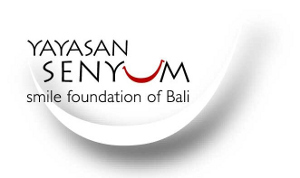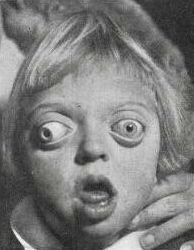
Dwarfism is a condition wherein an organism is exceptionally small, and mostly occurs in the animal kingdom. In humans, it is sometimes defined as an adult height of less than 147 centimetres, regardless of sex; the average adult height among people with dwarfism is 122 centimetres, although some individuals with dwarfism are slightly taller. Disproportionate dwarfism is characterized by either short limbs or a short torso. In cases of proportionate dwarfism, both the limbs and torso are unusually small. Intelligence is usually normal, and most have a nearly normal life expectancy. People with dwarfism can usually bear children, though there are additional risks to the mother and child dependent upon the underlying condition.

Fibrous dysplasia is a disorder where normal bone and marrow is replaced with fibrous tissue, resulting in formation of bone that is weak and prone to expansion. As a result, most complications result from fracture, deformity, functional impairment, and pain. Disease occurs along a broad clinical spectrum ranging from asymptomatic, incidental lesions, to severe disabling disease. Disease can affect one bone (monostotic), multiple (polyostotic), or all bones (panostotic) and may occur in isolation or in combination with café au lait skin macules and hyperfunctioning endocrinopathies, termed McCune–Albright syndrome. More rarely, fibrous dysplasia may be associated with intramuscular myxomas, termed Mazabraud's syndrome. Fibrous dysplasia is very rare, and there is no known cure. Fibrous dysplasia is not a form of cancer.

Shriners Children's is a network of non-profit medical facilities across North America. Children with orthopaedic conditions, burns, spinal cord injuries, and cleft lip and palate are eligible for care and receive all services in a family-centered environment, regardless of the patients' ability to pay. Care for children is usually provided until age 18, although in some cases, it may be extended to age 21.

Hemifacial microsomia (HFM) is a congenital disorder that affects the development of the lower half of the face, most commonly the ears, the mouth and the mandible. It usually occurs on one side of the face, but both sides are sometimes affected. If severe, it may result in difficulties in breathing due to obstruction of the trachea—sometimes even requiring a tracheotomy. With an incidence in the range of 1:3500 to 1:4500, it is the second most common birth defect of the face, after cleft lip and cleft palate. HFM shares many similarities with Treacher Collins syndrome.
Operation Smile is a nonprofit medical service organization founded in 1982 by Dr. William P. Magee Jr. and his wife Kathleen (Kathy) S. Magee. It is headquartered in Virginia Beach, Virginia.

Cherubism is a rare genetic disorder that causes prominence in the lower portion in the face. The name is derived from the temporary chubby-cheeked resemblance to putti, the chubby-faced infants featured in Renaissance paintings, which were often mistakenly described as cherubs.

Encephalocele is a neural tube defect characterized by sac-like protrusions of the brain and the membranes that cover it through openings in the skull. These defects are caused by failure of the neural tube to close completely during fetal development. Encephaloceles cause a groove down the middle of the skull, or between the forehead and nose, or on the back side of the skull. The severity of encephalocele varies, depending on its location.
Anodontia is a rare genetic disorder characterized by the congenital absence of all primary or permanent teeth. It is divided into two subsections, complete absence of teeth or only some absence of teeth. It is associated with the group of skin and nerve syndromes called the ectodermal dysplasias. Anodontia is usually part of a syndrome and seldom occurs as an isolated entity. There is usually no exact cause for anodontia. The defect results in the dental lamina obstruction during embryogenesis due to local, systemic and genetic factors.
Health advocacy or health activism encompasses direct service to the individual or family as well as activities that promote health and access to health care in communities and the larger public. Advocates support and promote the rights of the patient in the health care arena, help build capacity to improve community health and enhance health policy initiatives focused on available, safe and quality care. Health advocates are best suited to address the challenge of patient-centered care in our complex healthcare system. The Institute of Medicine (IOM) defines patient-centered care as: Health care that establishes a partnership among practitioners, patients, and their families to ensure that decisions respect patients’ wants, needs, and preferences and that patients have the education and support they need to make decisions and participate in their own care. Patient-centered care is also one of the overreaching goals of health advocacy, in addition to safer medical systems, and greater patient involvement in healthcare delivery and design.
Patient advocacy is a process in health care concerned with advocacy for patients, survivors, and caregivers. The patient advocate may be an individual or an organization, often, though not always, concerned with one specific group of disorders. The terms patient advocate and patient advocacy can refer both to individual advocates providing services that organizations also provide, and to organizations whose functions extend to individual patients. Some patient advocates work for the institutions that are directly responsible for the patient's care.

The Smile Foundation of Bali is a non-profit organisation in Bali that helps people with craniofacial disabilities obtain health care. Senyum means smile in Indonesian and yayasan means 'foundation' or 'institute'.
Frontonasal dysplasia (FND) is a congenital malformation of the midface. For the diagnosis of FND, a patient should present at least two of the following characteristics: hypertelorism, a wide nasal root, vertical midline cleft of the nose and/or upper lip, cleft of the wings of the nose, malformed nasal tip, encephalocele or V-shaped hair pattern on the forehead. The cause of FND remains unknown. FND seems to be sporadic (random) and multiple environmental factors are suggested as possible causes for the syndrome. However, in some families multiple cases of FND were reported, which suggests a genetic cause of FND.

In medical contexts, a facies is a distinctive facial expression or appearance associated with a specific medical condition. The term comes from Latin for "face". As a fifth declension noun, facies can be both singular and plural.
A facial cleft is an opening or gap in the face, or a malformation of a part of the face. Facial clefts is a collective term for all sorts of clefts. All structures like bone, soft tissue, skin etc. can be affected. Facial clefts are extremely rare congenital anomalies. There are many variations of a type of clefting and classifications are needed to describe and classify all types of clefting. Facial clefts hardly ever occur isolated; most of the time there is an overlap of adjacent facial clefts.

Facing Africa is a British registered charity providing funds for the visits of teams of voluntary surgeons from the UK, Germany, France, Spain and Netherlands to Ethiopia to carry out facial reconstructive surgery on the victims of the disease noma, and the acquisition of related surgical equipment, consumables and disposables for hospitals in Addis Ababa. The charity was founded in 1998, and deals with the 10% of survivors of noma, those who have survived the early stages but who will be left with the effects of this disease. It has an office at West Stowell, Wiltshire.
The American Society of Maxillofacial Surgeons (ASMS) is a professional organization focused on the science and practice of surgery of the facial region and craniofacial skeleton. The organization is involved in education, research, and advocacy on behalf of patients and maxillofacial surgeons.
Children's Healthcare of Atlanta (CHOA) sometimes simply referred to as Children's, is a not-for-profit children's healthcare system, located in the Atlanta area dedicated to caring for infants, children, teens, and young adults aged 0–21 throughout Georgia. CHOA formed in 1998 when Egleston Children's Health Care System and Scottish Rite Medical Center came together becoming one of the largest pediatric systems in the United States. In 2006 CHOA assumed responsibility for the management of services at Hughes Spalding Children's Hospital growing the system to three hospitals.
Anthony David Holmes AO is a plastic and reconstructive surgeon who trained in both Australia and the United States, and is qualified in both countries. His primary interest is facial reconstruction and he has developed several new procedures. His most high-profile surgery was in 2009 when he worked with a large team of experts to separate the Bangladeshi conjoined twins Trishna and Krishna. In 1990 he created the Children's Craniofacial Foundation of Australia which has subsequently been renamed The Jigsaw Foundation.
Andrew A.C. Heggie is an oral and maxillofacial surgeon at the Royal Children's Hospital in Melbourne, Australia. His primary interest has been the management of developmental skeletal facial deformity, including patients with cleft lip and palate, craniofacial microsomia and infants with micrognathism. His contribution to the treatment of infant upper airway obstruction for Pierre Robin sequence, using internal devices for jaw lengthening using distraction osteogenesis, has replaced the need for tracheostomy in this condition. In 2019, Heggie was awarded Member of the Order of Australia for significant service to medicine and dentistry in the field of oral and maxillofacial surgery.
Oto-palato-digital syndrome is the generalised term for two conditions, oto-palato-digital syndrome type I (OPD1) and oto-palato-digital syndrome type II (OPD2), that are both X-linked recessive genetic disorders with overlapping phenotypes. The most severe phenotypes of each syndrome occur only in males, with females generally having attenuated forms of the condition, although this does not apply to all individual cases. Some writers conceptualise oto-palato-digital syndrome as a spectrum disorder including two similarly-presenting genetic syndromes, frontometaphyseal dysplasia and Melnick-Needles syndrome.







